Idea to Product Journey
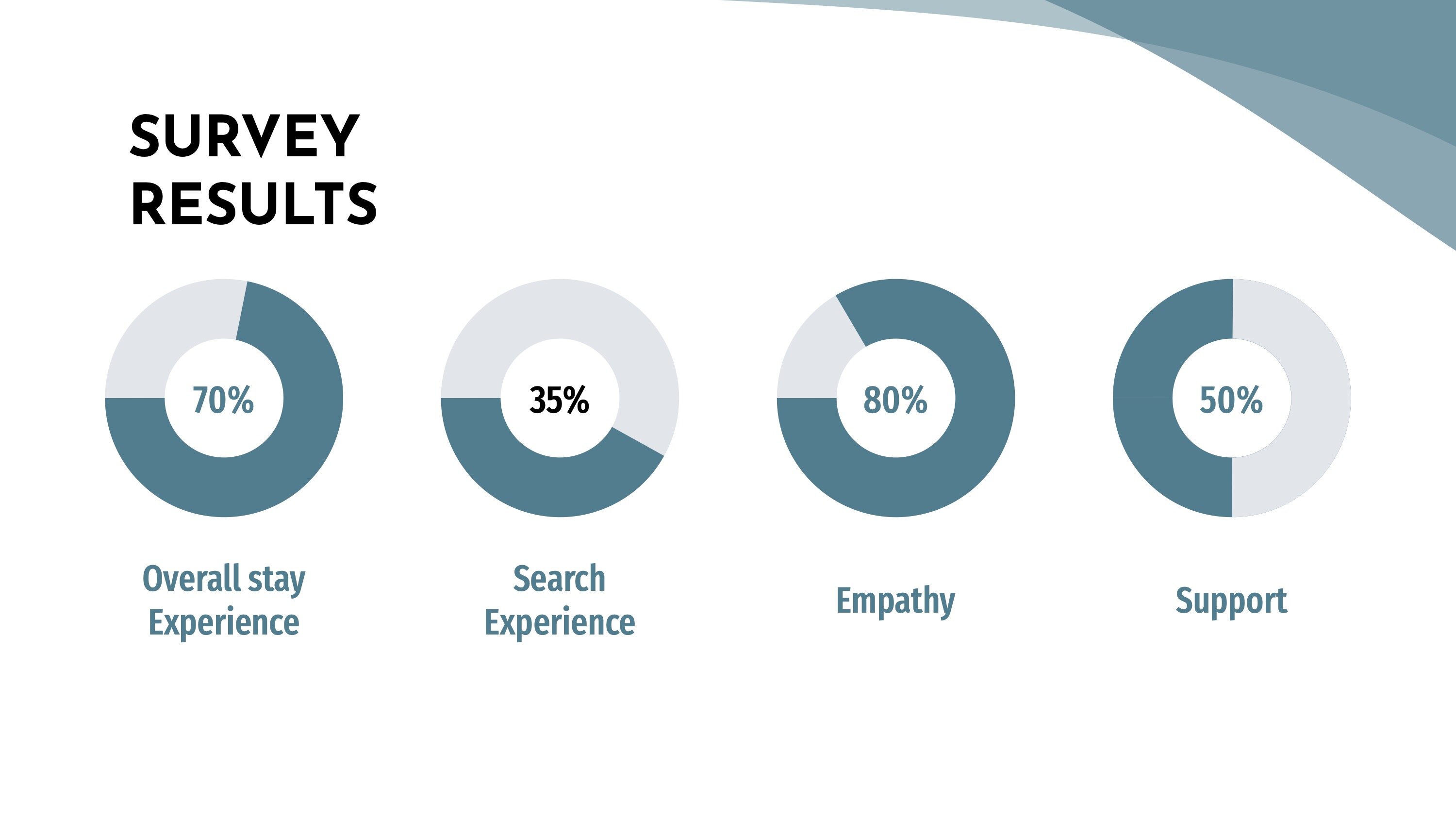
Have you ever wondered how to ensure that you genuinely understand the needs of the customer? How can you create a product or feature that effectively addresses the customer’s core problems?
Tackling these questions requires the adoption of a Product Mindset.
Why Product Mindset?
Product Mindset is about embracing customer-centricity, data-driven decisions, iterative progress, and an open mindset to learning and adapting. Let’s delve into this concept using a hypothetical scenario.
Furthermore, adopting a product mindset means that you view your product or service as a constantly evolving entity. This allows you to respond to market changes and customer feedback more effectively. The core components of a product mindset include:
- Customer Focus: Prioritising customer needs and feedback to shape the product.
- Data-Driven Decisions: Making informed decisions based on data rather than hunches.
- Continuous Improvement: Regularly iterating on the product to improve quality and performance.
- Flexibility and Adaptability: Being open to change and adapting the product to emerging trends and demands.
- Value-Driven Development: Focusing on features and updates that add the most value to the customer and the business.
- Cross-Functional Collaboration: Encouraging collaboration among various teams like product, engineering, marketing, and customer support.
Hypothetical Scenario
Imagine a company that provides a platform for short and long-term home stays and experiences. A recent survey reveals that customer satisfaction is alarmingly low, and there’s an urgent need to address their pain points.
Survey Results
Survey results are the initial data points which tell you where your product stands in the eyes of your consumers. It’s the first reality check and provides valuable insights into what’s working and what’s not.
In our hypothetical scenario, the company might find through survey results that:
- the customers are not satisfied with the search functionality and the booking process.
- the customers might also have concerns about the lack of communication and support options with the company and the hosts.
This information is invaluable as it helps pinpoint the exact areas in need of improvement.
Crafting a Problem Statement
With this data, we carefully craft a problem statement that encapsulates the primary concern from the survey results. Crafting a problem statement is about succinctly articulating the core issue that needs addressing.
This statement should be clear and concise, serving as the foundation for the product improvement process. Below is the problem statement for our hypothetical use case:
65% of customers report difficulty in finding properties that align with their specific needs, preferences, and style in a timely manner.
Assumptions
Based on the problem statement, we make some assumptions. Assumptions are initial educated guesses or hypotheses about the underlying causes of the problem. They are meant to be validated or invalidated through further research and testing.
- Customers find the current search feature insufficient in considering their prerequisites and preferences.
- There is a lack of an effective filtering mechanism, leading to irrelevant results.
- Customers may not be fully aware of the benefits of the properties displayed.
How Might We (HMW)?
Before identifying solutions, we employ the design thinking technique “How Might We (HMW)?” to frame problems as opportunities.
The HMW method is a way to reframe the problem into an opportunity. It is a solution-oriented approach that helps teams think creatively about the challenges at hand.
- HMW highlight the benefits of properties displayed to influence customer choices?
- HMW enable customers to discover property owners who genuinely care for their guests?
- HMW optimise the search feature to exclude irrelevant results?
Formulating a Hypothesis
Based on the HMW insights, we develop a hypothesis. A hypothesis is an educated guess that you can test. It’s a prediction about the relationship between variables and the impact of changes you propose.
Below is the hypothesis that we derive based on the HMW insights.
We believe that by educating customers on the benefits of the properties displayed and enhancing the search feature to respect their needs, preferences, and style, we can significantly improve customer satisfaction and loyalty.
Success Metrics
It’s essential to establish measurable goals. For our Objective, we define Key Results (KRs). Success metrics are quantifiable measures used to track the efficiency of changes. These should align with your goals and provide a clear measure of success or failure.
Objective: Ensure all customers find suitable places to stay efficiently.
- Key Result 1: Increase conversion rate by 80% within 6 months of launch.
- Key Result 2: Reduce average search and booking time by 50% within 3 months of launch.
- Key Result 3: Achieve a Net Promoter Score (NPS) above 90 within 6 months.
Customer Research
Primary and Secondary Personas
Identifying and focusing on the customer groups whose needs we are addressing is crucial. We create personas to represent these groups. We create personas to represent these groups. Personas are fictional characters that embody the characteristics, needs, motivations, and environment of a core user group.
Primary Persona: The primary persona is a representation of your main user base. This helps the team to have a clear understanding of whom they are building for.
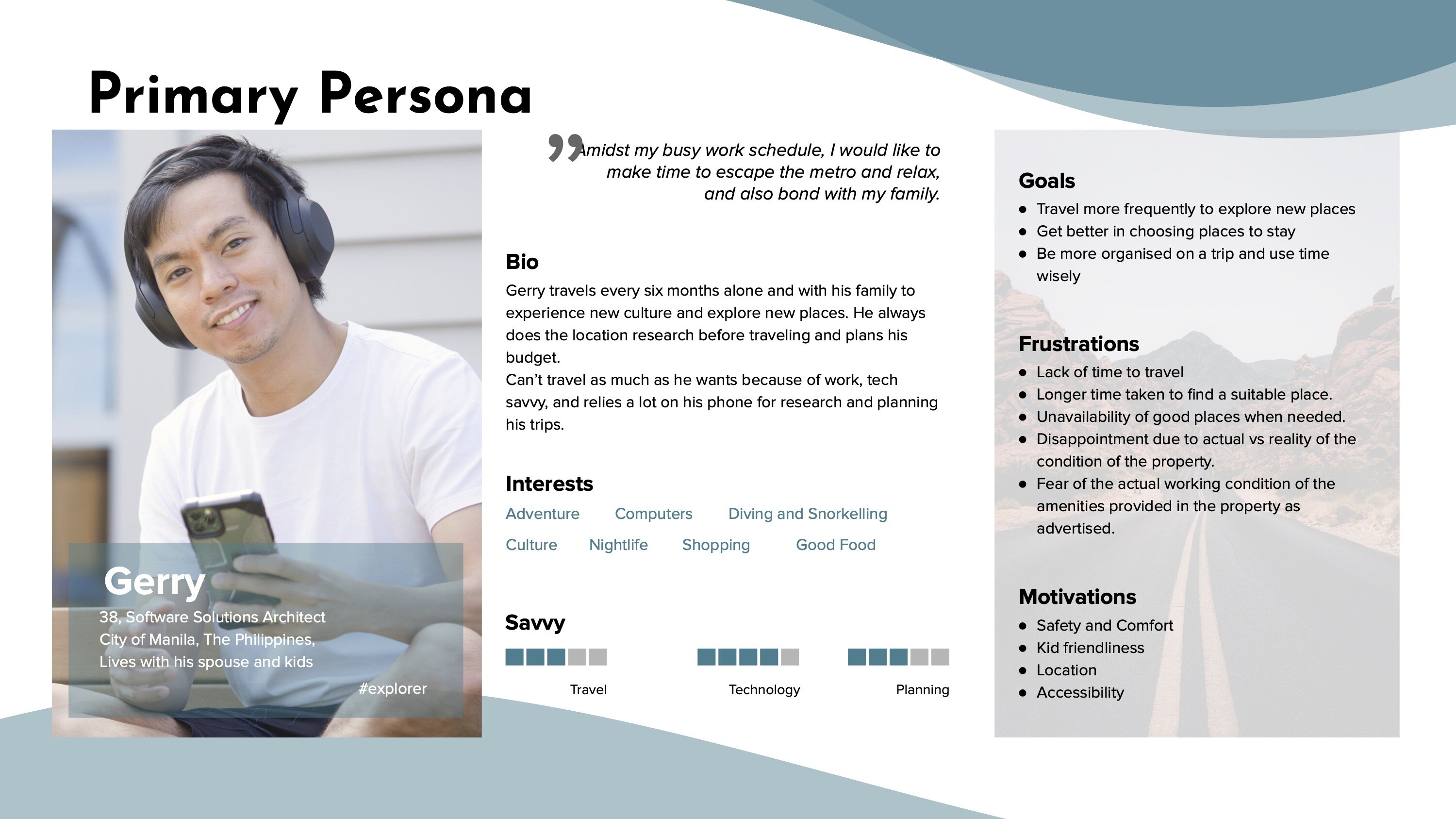
Secondary Persona: Secondary Persona represents other significant user groups that may have different needs and use cases.
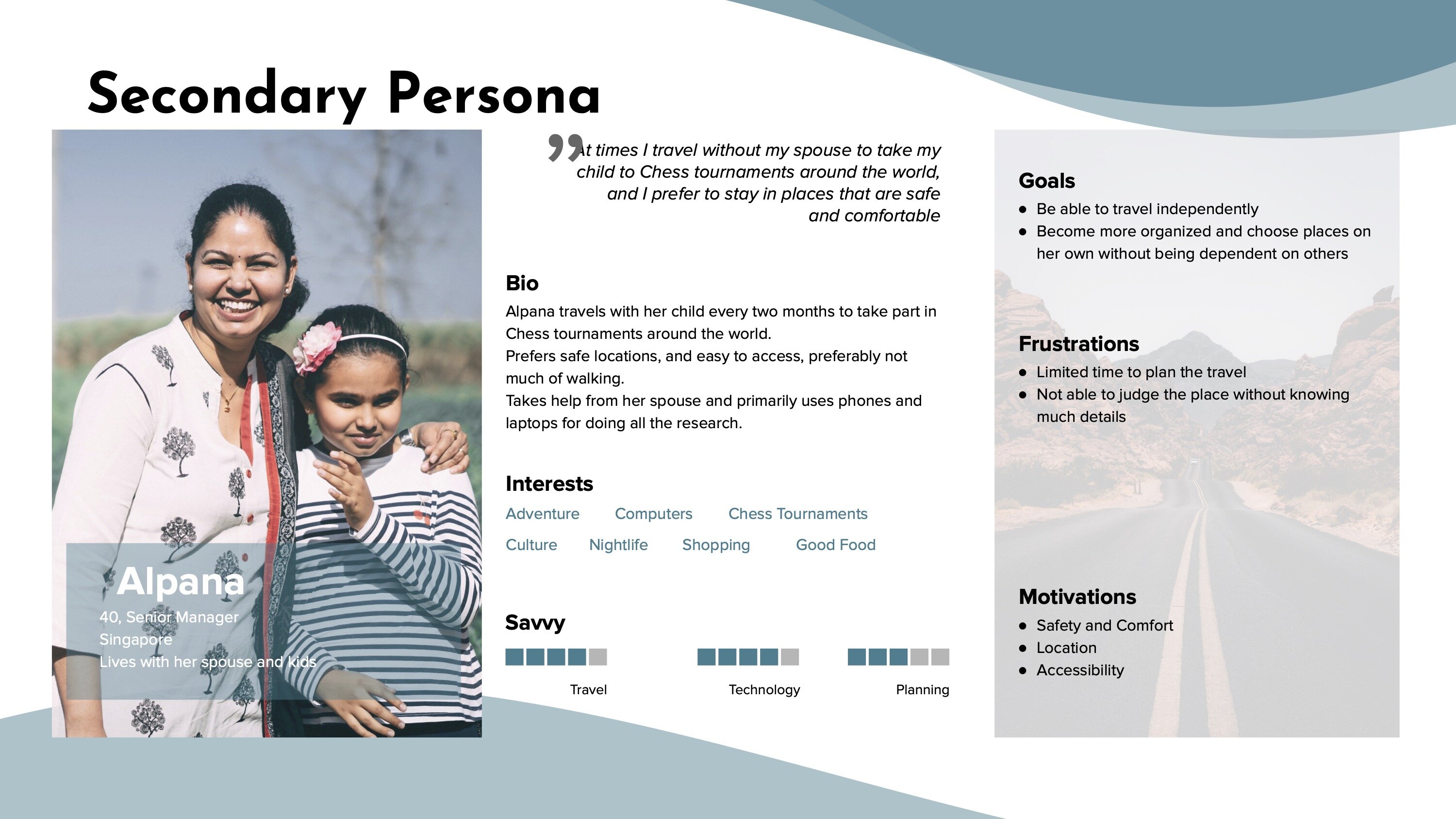
Feedback Survey
We design a questionnaire with both quantitative and qualitative elements to gather feedback from customers represented by the primary and secondary personas. It’s vital that the questions are unbiased.
Feedback surveys are tools used to gather data on customer preferences, pain points, and satisfaction levels. These surveys help validate assumptions and guide the product development process.
Below is a sample questionnaire for our use case.

Research Data
After conducting the surveys, the data needs to be organised and analysed to draw meaningful insights. This data helps in making informed decisions on what features or changes should be prioritised.
Customer Research Data
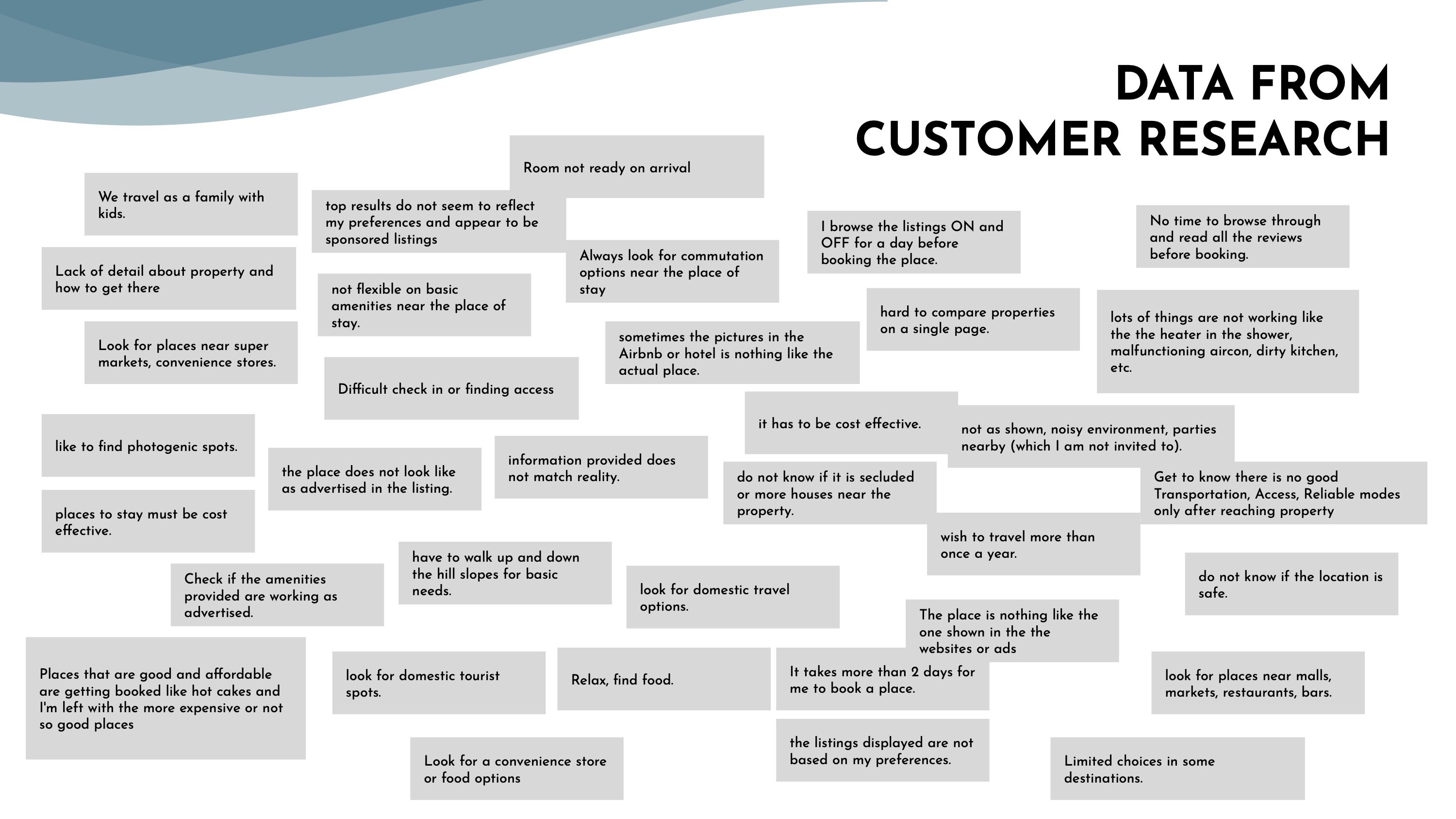
Customer Research Sorted Data
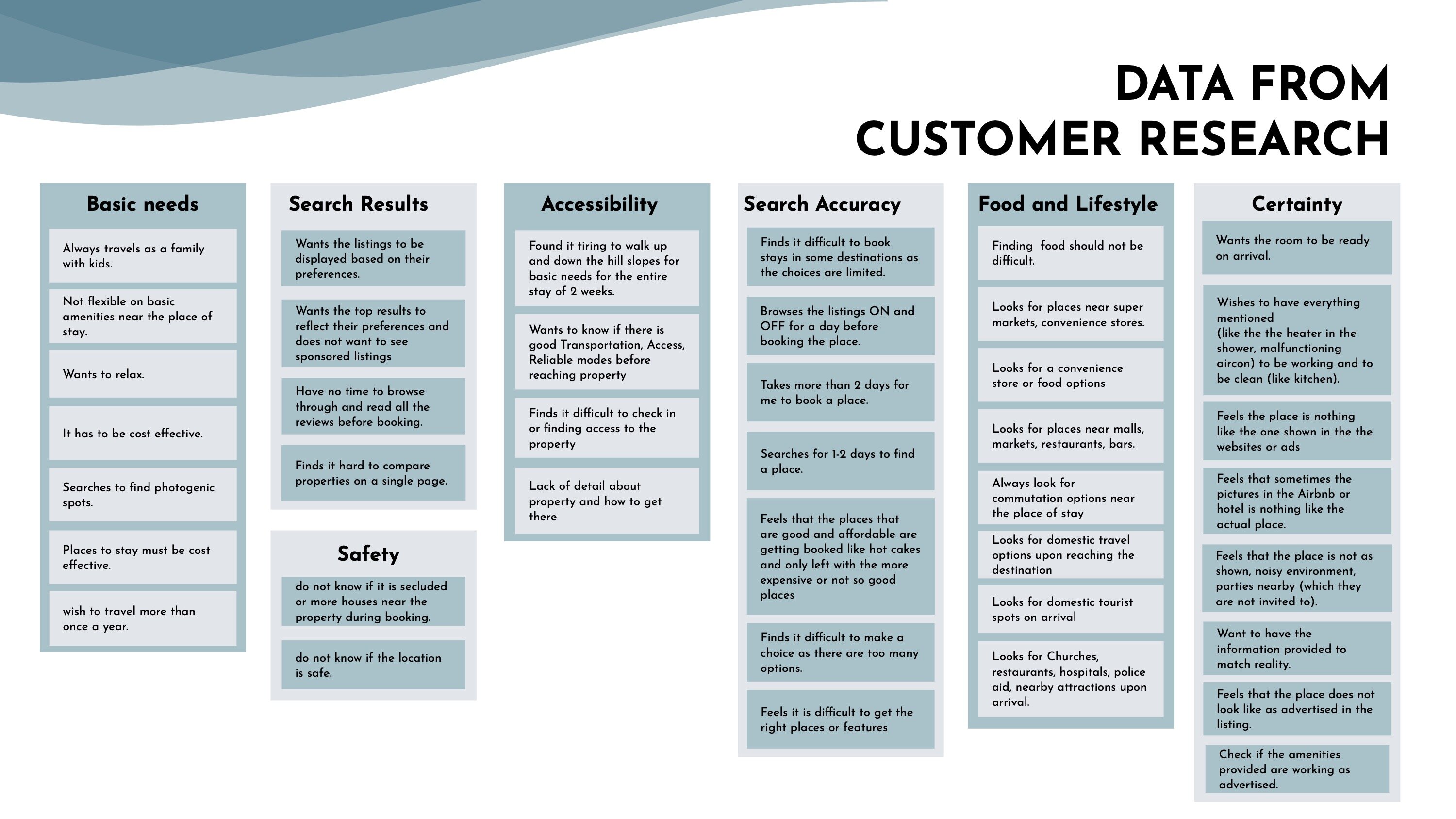
Deriving Insights
Deriving insights involves interpreting the data to understand patterns and trends. These insights will guide the decisions and strategies for product development.
Based on the data analysis, we can derive the following insights.
| # | Summary | Insight | Inference |
|---|---|---|---|
| 1 | YOU KNOW ME | “You know about my preferences. Show the results based on them to me first.” | Customers appreciate personalised experiences. |
| 2 | EXPLAIN ME | “Help me understand why I should choose the place you suggest.” | Customers want clarity in options. |
| 3 | CO-CREATE WITH ME | “I am ready to co-create with you.” | Customers are willing to be part of the solution. |
Applying Insights to Product Development
Applying insights is about taking the knowledge gained from the data and using it to make informed decisions in the product development process. These insights and inferences inform the product development process.
| # | Insight Inference | Feature Suggestion | Feature |
|---|---|---|---|
| 1 | Customers appreciate personalised experiences. | Create a feature that remembers and prioritises customer preferences in search results | Updated Search and Results Feature |
| 2 | Customers want clarity in options. | Add tooltips, detailed descriptions, and reviews to help customers make informed decisions. | Updated Search and Results Feature. |
| 3 | Customers are willing to be part of the solution. | Implement features that allow customers to provide feedback or suggestions. | Add/Update Preferences, Real time feedback |
Product Feature Backlog
We can now assemble a Product Backlog with the feature sets and align them with the assumptions. The product feature backlog is a prioritised list of features and improvements that are planned for development.
| Assumption | Features |
|---|---|
| The Customer expects the search function to be more intuitive and intelligent enough to understand their specific needs, preferences and style. | Updated Search and Results Feature. |
| The Customer will be happy to provide additional details to express their preferences and specific needs to be saved as part of their profile. | Add Preferences. |
| The Customer will be ready to tweak their preferences if they understand why the results are being shown. | Update/Delete Preferences. |
| The Customer will be happy to share feedback about the search results during the session. | Real time feedback |
Creating Wireframes and Mockups
With the feature sets defined, create wireframes and mockups to support building the features.
Wireframes are basic, structural design layouts that outline the arrangement of elements in the application. Mockups are more detailed representations that included sign and visual elements. Both are crucial for visualising and planning the user interface.
Wireframes Wireframes are used to plan the layout and interaction patterns without being distracted by visual design and content.
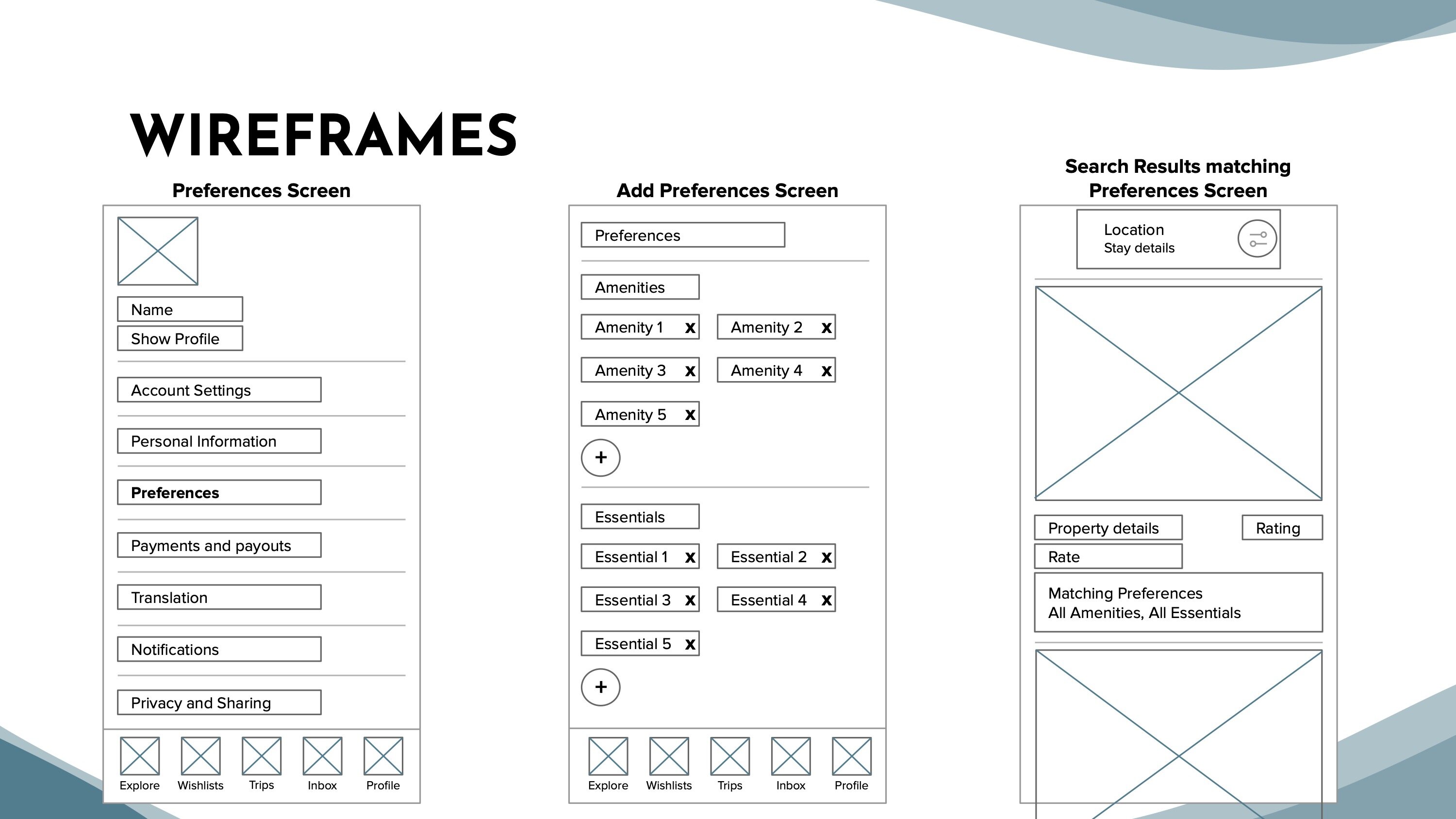
Mockups Mockups are visual guides representing the skeletal framework of a product. They provide a clearer idea of how the final product will look by including colours, images, typography, and graphics.
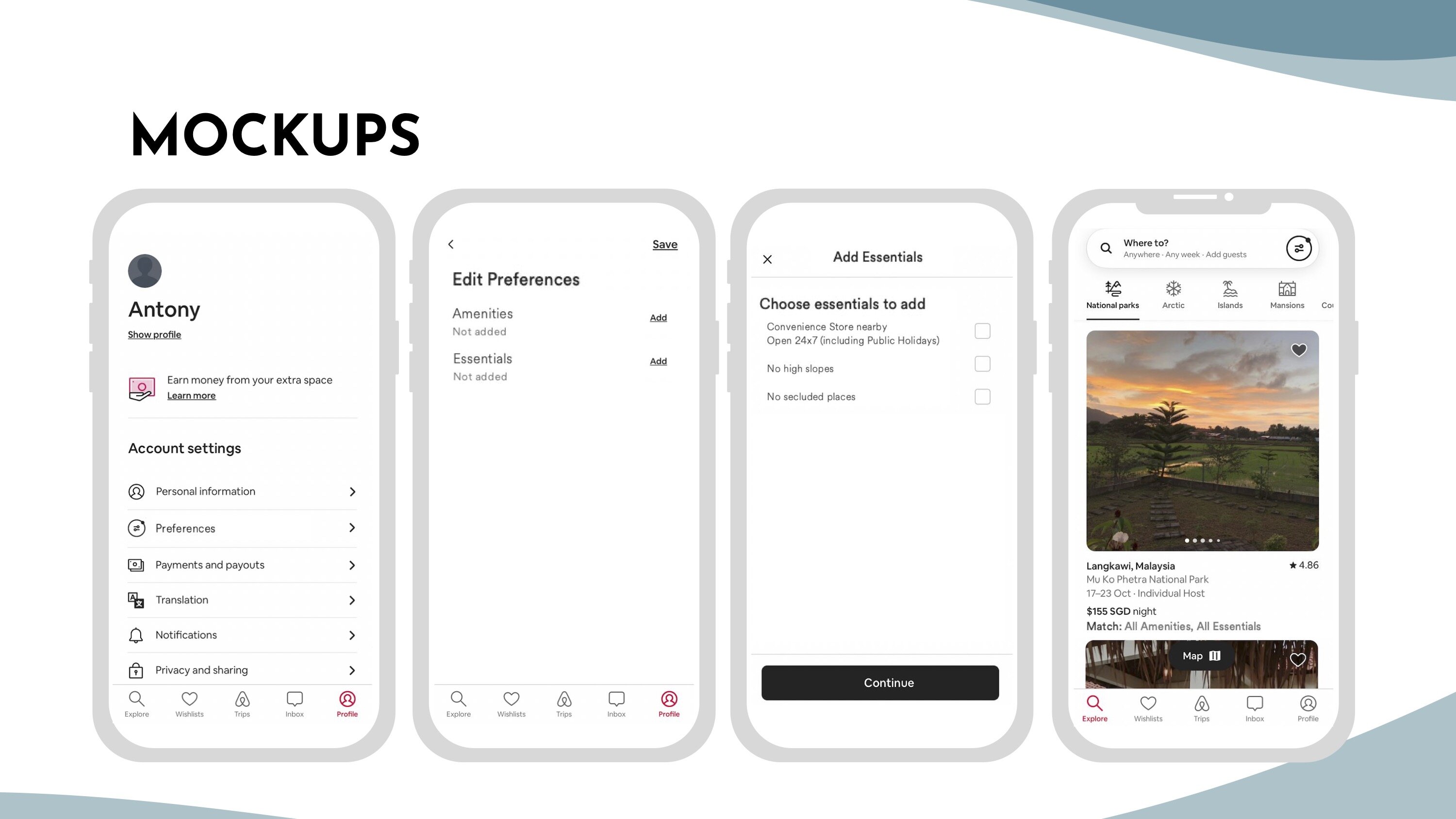
Iterative Development
Iterative development involves developing the product in small increments and continually improving it through feedback.
Adopt a Minimum Viable Product (MVP) approach for an initial release with a minimum set of features for validation. The Minimum Viable Product (MVP) approach involves developing a product with the minimum features necessary to satisfy early customers and provide feedback for future product development.
In our use case, we could take the following approach.
- MVP:
- Add/Edit/Delete preferences to the profile
- Search listings with preferences always ON
- Display matching preferences below listing
- Release 1:
- Also display results that miss a few must-have preferences
- Tweak preferences from the listings screen to re apply updated preferences
Summary
Adopting a product mindset is an empathetic, customer-focused approach involving continuous learning, iterating, and aligning the product with customer needs and business objectives.
It’s about finding a balance between delivering exceptional customer experiences and achieving business goals while adapting as customer needs and market conditions evolve.